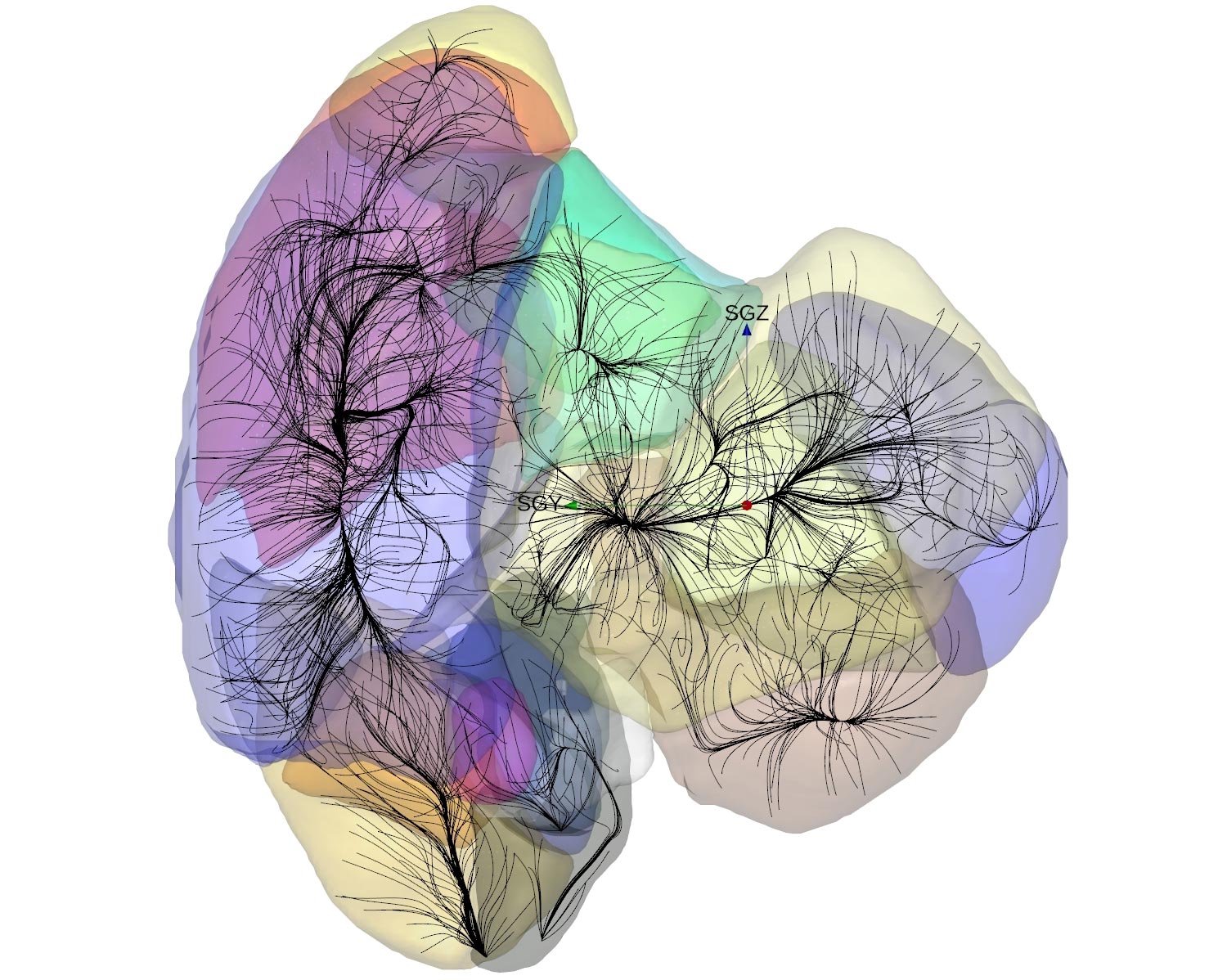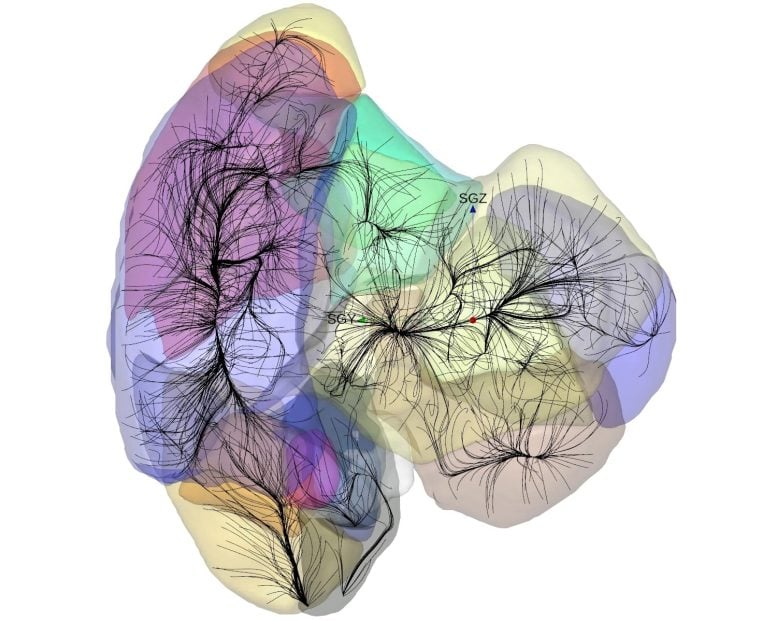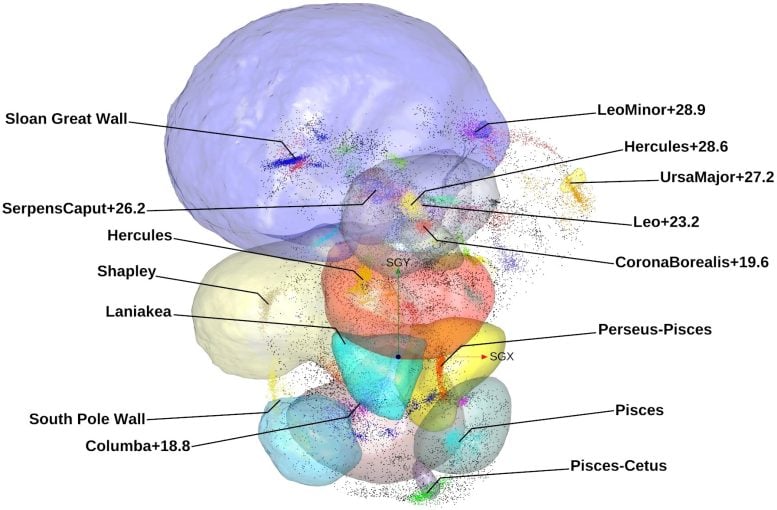

A new study highlights major gravitational areas in the Universe, showing the Sloan Great Wall as the most massive, potentially reshaping our understanding of local cosmic structures.
Researchers have mapped out the gravitational “basins of attraction” within the local Universe, shedding new light on the vast cosmic structures that shape the movement of galaxies. Using advanced data from the Cosmicflows-4 compilation of distances and velocities of roughly 56,000 galaxies, the researchers applied cutting-edge algorithms to identify regions where gravity dominates, such as the Sloan Great Wall and the Shapley Supercluster. This study suggests that our Milky Way most probably resides within the larger Shapley basin, shifting our understanding of cosmic flows and the role of massive structures in shaping the Universe’s evolution.
Understanding the Structure of the Universe
An international team of researchers has made significant progress in decoding the Universe’s vast structure by pinpointing crucial gravitational areas known as “basins of attraction.”
Dr. Valade (during his doctoral work under the supervision of Prof. Yehuda Hoffman from Hebrew University) and Prof. Noam Libeskind from AIP Potsdam led the research. The work also involved contributions from Dr. Pomarede from the University of Paris-Saclay, Dr. Pfeifer from AIP Potsdam, and Prof. Tully and Dr. Kourkchi from the University of Hawaii.
Cosmology and the ΛCDM Model
The study is based on the widely accepted Lambda Cold Dark Matter (ΛCDM) standard model of cosmology, which suggests that the Universe’s large-scale structure emerged from quantum fluctuations during the early stages of cosmic inflation. These minute fluctuations in density evolved over time, forming the galaxies and clusters we observe today. As these density perturbations grew, they attracted surrounding matter, creating regions where gravitational potential minima, or “basins of attraction,” formed.
Advancements Through Cosmicflows-4 Data
Utilizing the latest data from the Cosmicflows-4 (CF4) compilation the team employed a Hamiltonian Monte Carlo algorithm to reconstruct the large-scale structure of the Universe up to a distance corresponding to roughly a billion light years. This method allowed the researchers to provide a probabilistic assessment of the Universe’s gravitational domains, identifying the most significant basins of attraction that govern the movement of galaxies.

Laniakea and Shapley Basins of Attraction: New Discoveries
Earlier catalogs had suggested that the Milky Way Galaxy was part of a region called the Laniakea Supercluster. However, the new CF4 data offers a slightly different perspective, indicating that Laniakea might be part of the much larger Shapley basin of attraction, which encompasses an even greater volume of the local Universe.
Among the newly identified regions, the Sloan Great Wall stands out as the largest basin of attraction, with a volume of about half a billion cubic lightyears, more than twice the size of the Shapley basin, which was previously considered the largest. These findings provide an unprecedented look into the gravitational landscape of the local Universe, offering new insights into how galaxies and cosmic structures evolve and interact over time.
A Leap Forward in Cosmological Understanding
This research offers a deeper understanding of the Universe’s intricate gravitational dynamics and the forces that have shaped its structure. The identification of these basins of attraction is a significant advancement in cosmology, potentially reshaping our understanding of cosmic flows and large-scale structures.
This research is important because it deepens our understanding of the large-scale structure of the Universe and the gravitational forces that shape it. By mapping out the basins of attraction—regions where gravity pulls galaxies and matter—the study reveals how massive cosmic structures influence the movement and formation of galaxies over time. Understanding these dynamics not only helps us better grasp the Universe’s past and its ongoing evolution, but also provides valuable insights into fundamental cosmological questions, such as the distribution of dark matter and the forces driving cosmic expansion. This knowledge has the potential to refine our models of the Universe and guide future astronomical research.
Reference: “Identification of basins of attraction in the local universe” 27 September 2024, Nature Astronomy.
DOI: 10.1038/s41550-024-02370-0